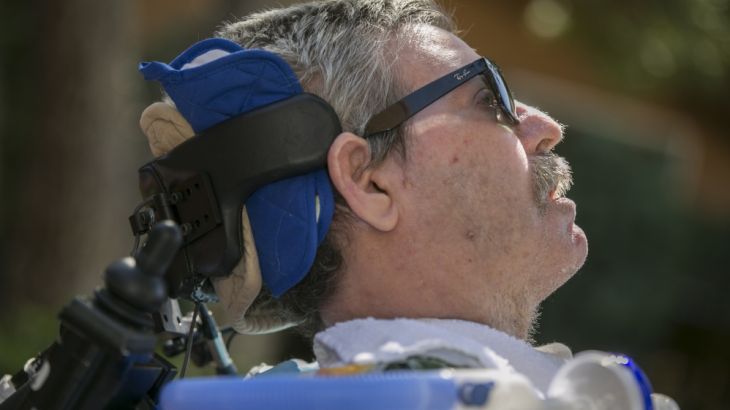
Giving voice to the voiceless
TechKnow explores how new voice technology that sounds ever more human becomes the ultimate gift to the voiceless.
The frustration of a synthetic voice is a reality for many who can only speak through computers. But now researchers are creating sounds that capture individual personalities and preserve a voice for those facing a cruel loss. For those in need, new voice technologies offer the sweet sounds of success.
Each of us has a unique voice, it makes us human. We make judgements about people based on their voice. So I feel like it's very important for people who don't speak and who don't have devices to talk to have that same ability to project who they are and to be known as people and not just robots that talk.
Tens of millions of people can’t speak or have limited speech. Two and a half million of them live in the United States alone. And of those 2.5 million, 40 percent use a standardised text-to-speech computer program to communicate – and they all sound alike.
Keep reading
list of 4 itemsHong Kong’s first monkey virus case – what do we know about the B virus?
Why will low birthrate in Europe trigger ‘Staggering social change’?
The Max Planck Society must end its unconditional support for Israel
VocaliD, a US-based technology company in Boston, Massachusetts is trying to change all of that.
“What we’re doing at VocaliD is we’re taking a tiny sample of someone’s voice and hours of someone else’s voice, and we’re trying to make it sound like the person we have a tiny sample from – that’s the scientific challenge,” says its founder and CEO, Rupal Patel, a speech scientist.
With thousands of English-speaking donors from around the world, Patel and Geoff Meltzner, the director of research and technology at VocaliD, are creating the voices.
Walking us through the voice creation process, Meltzner explains, “when we speak, the air in our lungs, when we force it out, goes through our trachea and hits the larynx. In the larynx are our vocal chords and those vibrate, and from that, produces a sound and then that excites your vocal tract, your throat, your mouth, your nasal passage, and it’s shaped by your tongue, your lips.”
Based on a small sample given by his 16-year-old client Sarah Young, who suffers from cerebral palsy and is unable to produce speech, “what we do is separate the vocal tract part from her. We just grab what she’s doing with her larynx and on the other end, we take the donor and we do the opposite. We toss what’s going on in the vocal chords and keep what’s going on with the tongue and lips,” continues Meltzner.
Then, like an online dating service, the computer matches acoustical vocal patterns of the donor with the vocally-challenged recipient. A voice donor can “give” their voice by recording 3,500 sentences, which approximately takes four hours to capture all the possible sounds needed for speech.
Describing how she came up with building voices, speech scientist Patel, says “it was in 2002; I was at a conference in Denmark, so I saw a little girl and a grown man having a conversation using different assistant devices but the exact same voice, so I looked around and saw it happening all around me.”
There’s an artistry and psychology about creating a voice, Patel admits, “every science has an art form to it, but in the case of making a custom voice, it’s not only about it being understandable, it’s also about: is it authentic? Does it resonate with the person using it, and do they feel like it’s them?”
Nine-year-old Maeve Flack, through VocaliD technology, thinks having her own voice would be “cool” because, “I’ll sound like a kid”.
While VocaliD technology is concerned with improving past conditions, what if you knew that you were going to lose your voice in the future? How would you preserve it?
A new text-to-speech program called “My Own Voice” helps those with degenerative diseases like 31-year-old journalist Angelina Fanous to capture the essence of their voice so their unique characteristics shine through.
Diagnosed with ALS, also known as Lou Gehrig’s disease, Fanous is preparing for the inevitable silence by recording the 1,500 sentences for “My Own Voice,” which will create her individual synthetic voice. Her motivation for banking her voice steps from her deep fears of sounding “like a robot”.
“Your voice and how you communicate and the cadence in which you say sentences – I am going to completely lose that – so that’s why I can’t be excited about a robot voice,” she says.